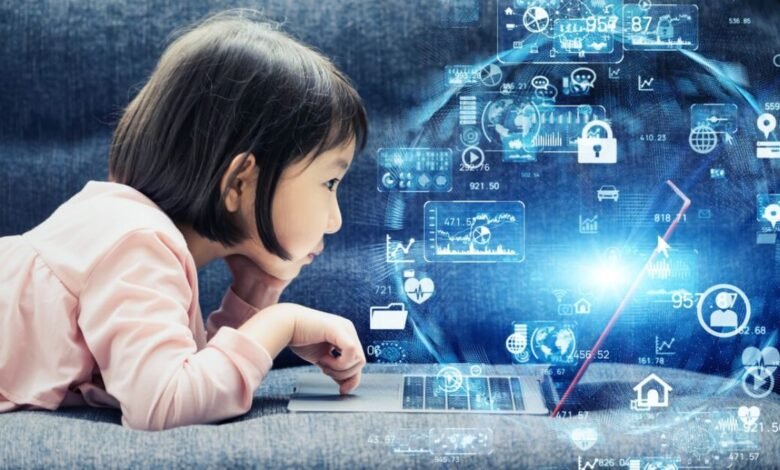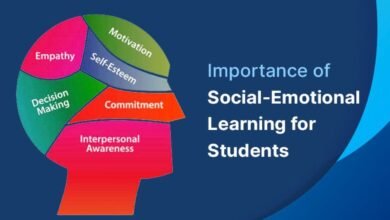The Impact of AI on Education: Opportunities and Challenges

Artificial Intelligence (AI) has rapidly become a transformative force across various industries, and education is no exception. From personalized learning experiences to administrative efficiency, AI’s impact on education is profound, offering both opportunities and challenges. This article explores the multifaceted influence of AI on education, examining how it is reshaping teaching and learning processes, the potential benefits it brings, and the challenges that educators, students, and institutions face in integrating AI into educational systems.
The Evolution of AI in Education
The integration of AI in education is not a sudden phenomenon; it has evolved over time as technology advanced and educational needs grew more complex. Initially, AI in education was limited to basic automation, such as automated grading systems for multiple-choice tests. However, as AI technologies developed, so did their applications in the classroom. Today, AI-powered tools are capable of performing tasks that were once thought to be exclusively human, such as understanding and responding to natural language, recognizing patterns in data, and making predictions.
AI’s evolution in education can be categorized into three main phases: early automation, adaptive learning, and intelligent systems. In the early automation phase, the focus was on simplifying administrative tasks. Adaptive learning marked the transition to more personalized learning experiences, where AI systems could adapt content to meet individual student needs. The current phase, intelligent systems, encompasses a wide range of AI applications, including intelligent tutoring systems, predictive analytics, and virtual reality (VR) and augmented reality (AR) tools that enhance learning experiences.
Opportunities Presented by AI in Education
AI offers numerous opportunities to improve educational outcomes, enhance student engagement, and streamline administrative processes. These opportunities are driving a significant transformation in how education is delivered and received.
Personalized Learning
One of the most significant advantages of AI in education is its ability to provide personalized learning experiences. AI systems can analyze data from a student’s interactions with educational content, identify their strengths and weaknesses, and tailor lessons to address their individual needs. This personalized approach allows students to learn at their own pace, receive targeted support, and achieve better learning outcomes.
For example, AI-powered platforms like Knewton and DreamBox use algorithms to adapt educational content based on real-time student performance. These platforms continuously assess a student’s progress and adjust the difficulty level of exercises accordingly. As a result, students receive a customized learning experience that is both challenging and supportive, which can lead to increased motivation and engagement.
Enhanced Student Engagement
AI can also enhance student engagement by making learning more interactive and immersive. Technologies such as VR and AR, powered by AI, create virtual environments where students can engage in hands-on learning experiences that would be impossible in a traditional classroom setting. For instance, students can explore historical sites, conduct virtual science experiments, or interact with 3D models of complex biological structures. These immersive experiences can deepen students’ understanding of the material and make learning more enjoyable.
Moreover, AI-driven chatbots and virtual assistants can provide students with instant feedback and support, helping them stay engaged with their studies. These tools can answer questions, provide explanations, and even offer encouragement, creating a more interactive and responsive learning environment.
Improved Administrative Efficiency
Beyond the classroom, AI is also transforming the administrative side of education. AI-powered systems can automate routine tasks such as grading, scheduling, and attendance tracking, freeing up time for educators to focus on more meaningful activities like lesson planning and student interaction. For example, AI grading systems can quickly and accurately assess student work, providing detailed feedback that helps students improve their performance. Additionally, AI-driven analytics can help educators identify trends in student performance, allowing them to intervene early and provide additional support where needed.
AI can also assist in streamlining the admissions process by analyzing applicant data and making recommendations for admission decisions. This can help institutions make more informed choices, ensuring that they select students who are likely to succeed in their programs.
Access to Education
AI has the potential to democratize education by making high-quality learning resources accessible to a broader audience. Online learning platforms powered by AI can deliver educational content to students anywhere in the world, regardless of their geographic location or socioeconomic status. This has been particularly important in the context of the COVID-19 pandemic, where traditional classroom-based education was disrupted, and online learning became the norm.
AI-driven platforms like Coursera and edX offer a wide range of courses from top universities, allowing students to access education that would otherwise be out of reach. Additionally, AI can support students with disabilities by providing personalized learning tools and accommodations, such as speech-to-text applications, screen readers, and adaptive keyboards.
Challenges of AI in Education
While AI presents numerous opportunities for enhancing education, it also introduces several challenges that must be addressed to ensure its successful integration into educational systems. These challenges include ethical considerations, the potential for bias, and the need for teacher training and adaptation.
Ethical Considerations
The use of AI in education raises important ethical questions, particularly regarding data privacy and security. AI systems rely on vast amounts of data to function effectively, including sensitive information about students’ academic performance, behavior, and even personal characteristics. Ensuring that this data is collected, stored, and used in a way that respects students’ privacy is a significant challenge.
Moreover, there are concerns about the potential misuse of AI in education, such as the use of AI to monitor students’ behavior or predict their future performance based on past data. While these applications can provide valuable insights, they also raise questions about the fairness and transparency of AI decision-making processes. For instance, if an AI system predicts that a student is likely to fail a course based on historical data, it could influence the way teachers and administrators interact with that student, potentially leading to a self-fulfilling prophecy.
The Risk of Bias
Another challenge associated with AI in education is the risk of bias. AI systems are only as good as the data they are trained on, and if that data is biased, the AI’s decisions and recommendations may also be biased. This can result in unfair treatment of certain students, particularly those from marginalized or underrepresented groups.
For example, if an AI system used to assess student performance is trained on data from a predominantly wealthy, white student population, it may not accurately reflect the experiences and abilities of students from different backgrounds. This could lead to biased recommendations, such as suggesting that certain students are less capable or less likely to succeed, based on their demographic characteristics rather than their actual abilities.
Addressing bias in AI requires careful consideration of the data used to train these systems, as well as ongoing monitoring and evaluation to ensure that AI applications in education are fair and equitable.
Teacher Training and Adaptation
The successful integration of AI into education also depends on the ability of educators to adapt to new technologies. While AI can enhance teaching and learning, it is not a substitute for human teachers. Educators play a critical role in guiding students, providing context, and fostering critical thinking skills that AI cannot replicate.
However, many teachers may feel unprepared to use AI tools effectively in their classrooms. This highlights the need for comprehensive teacher training programs that equip educators with the skills and knowledge to integrate AI into their teaching practices. Training should focus not only on the technical aspects of using AI tools but also on understanding the ethical implications and potential biases associated with AI in education.
Additionally, there is a need for ongoing professional development to ensure that teachers stay up-to-date with the latest advancements in AI technology and its applications in education. This will enable them to leverage AI’s full potential while addressing the challenges it presents.
The Future of AI in Education
Looking ahead, the impact of AI on education is likely to continue growing as technology advances and educational systems become more receptive to innovation. The future of AI in education will likely be characterized by greater integration of AI-powered tools in both traditional and online learning environments, leading to more personalized, engaging, and efficient educational experiences.
One area of potential growth is the use of AI in lifelong learning and professional development. As the job market evolves and new skills become necessary, AI-driven platforms can help individuals continuously update their knowledge and skills, ensuring they remain competitive in the workforce. This will be particularly important in industries where technological advancements are rapidly changing the nature of work.
Another area of growth is the use of AI to support collaborative learning. AI systems can facilitate group work by analyzing the dynamics of group interactions and providing insights into how teams can work more effectively together. This could lead to more effective and collaborative learning experiences, both in educational settings and in the workplace.
However, the future of AI in education will also depend on how well the challenges associated with its use are addressed. Ensuring that AI is used ethically, fairly, and transparently will be critical to its success. Additionally, ongoing investment in teacher training and professional development will be essential to ensuring that educators are equipped to harness the power of AI in their teaching practices.
Conclusion
The impact of AI on education is profound, offering both significant opportunities and substantial challenges. As AI continues to evolve, it has the potential to transform the way education is delivered, making learning more personalized, engaging, and accessible. However, the successful integration of AI into education requires careful consideration of the ethical implications, the potential for bias, and the need for teacher training and adaptation.
By addressing these challenges and leveraging the opportunities presented by AI, educators and institutions can create a more effective and inclusive educational system that prepares students for the demands of the 21st century. The future of AI in education is promising, but it will require a thoughtful and balanced approach to ensure that its benefits are realized while minimizing potential risks.



